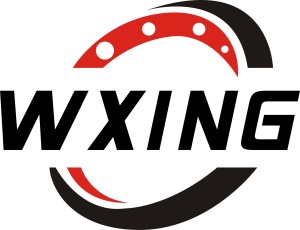PRODUCT
Types and characteristics of forging
by:Waxing
2020-10-05
When the temperature exceeds 300 -
400℃(
Steel blue brittle zone)
To - 700
800 ℃, the deformation resistance will decrease sharply deformation can also get great improvement.
According to the different forging temperature area, in view of the different quality of forgings and forging process requirements, can be divided into three cold forging, warm forging, hot forging forming temperature area.
Originally this temperature region division, there is no strict boundaries, generally speaking, the recrystallization temperature region of the forging, called hot forging, no heating forging is called cold forging at room temperature.
When the cold forging, forging the size of the change is very small.
Forging under 700 ℃, and less scale formation, and surface decarburization phenomenon.
Therefore, as long as the deformation in forming can within the scope of cold forging is easy to get good dimensional accuracy and surface finish.
As long as the good control of temperature and lubrication cooling, the temperature under 700 ℃ forging can also achieve good accuracy.
Hot forging, due to the small deformation and deformation resistance, can be forged shape complicated large forgings.
In order to get high dimensional precision forging, can be in 900 -
1000 ℃ temperature field using hot forging processing.
Also, pay attention to improve working conditions for hot forging.
The die (
2 - hot forging
5000, warm forging
2-20000, cold forging
50000. )
Compared with other temperature field of forging is shorter, but its degree of freedom is big, the cost is low.
To produce when in cold forging deformation and strain hardening, the forging die under high load, therefore, need to use the high strength of the forging die and using hard of lubricant to prevent wear and adhesive processing method.
In addition, to prevent crack in billet, intermediate annealing when necessary to ensure deformation ability.
To keep good lubrication condition, phosphating of billet.
In a continuous process with bar and wire rod, and the current of cross section is not lubrication processing, are studying the possibility of phosphating lubrication method is used.
According to the movement of blank, forging can be divided into free forging, upsetting and extrusion, die forging, closed die forging, closed upset.
Closed die forging and closed upset because there is no flash, material utilization ratio is high.
With a process or a few process can complete complex forging finishing.
Since there is no flash, forging stress area is reduced, the required load is also reduced.
However, we should pay attention to not make blank completely is restricted, so we will strictly control the volume, control the relative position of forging die and measure of forgings, effort to reduce the wear and tear of forging die.
According to the movement of the forging die, forging pendulum is rolling, can divide again for rotary forging, roll forging, cross wedge rolling, ring rolling and skew rolling, etc.
Pendulum is rolling, forging and ring rolling forging process is also available.
In order to improve the utilization rate of material, forging and rolling can be used as a long and thin materials before processing.
With the rotation of the free forging forging is also the local forming, its advantage is compared with the size of forging, forging force also can realize form smaller cases.
Including free forging, the way of forging and processing the materials from the mold surface near to the free surface extension, therefore, it is difficult to guarantee the accuracy, so will the movement direction of the forging die and spin blacksmith sequence with computer control, a lower forging force are available on complex shape, high precision products.
Such as production of many varieties, large size of the turbine blade forgings.
Mould forging equipment movement and the degrees of freedom are not consistent, according to the characteristics of bottom dead center deformation limit, forging equipment can be divided into the following four forms: the & # 8226;
Limit the forging force forms: hydraulic direct drive the slider of the hydraulic press.
•
Prospective stroke limit way: hydraulic driving crank connecting rod mechanism of hydraulic press.
•
Stroke limit way: drive the slider crank, connecting rod and wedge system of mechanical press.
•
Power restriction way: using the spiral screw mechanism and the friction press.
In order to obtain high accuracy should pay attention to prevent overload bottom dead center, control the speed and mould.
Because the tolerance, the shape precision of forgings and forging die life.
In addition, in order to maintain accuracy, but also should pay attention to adjust the slider guide clearance, ensure rigidity, adjust the bottom dead center and utilization measures of transmission device.
In addition, according to the slider movement way and the slider vertical and horizontal movement (
For long and thin piece forging parts, lubrication, cooling and high-speed production forging)
Compensation device can be used to increase the other way, the direction of the movement.
This way is different, the forging force, process, material utilization ratio, yield, size tolerance and lubrication cooling way is different, these factors also affect the level of automation.
Custom message



























































































